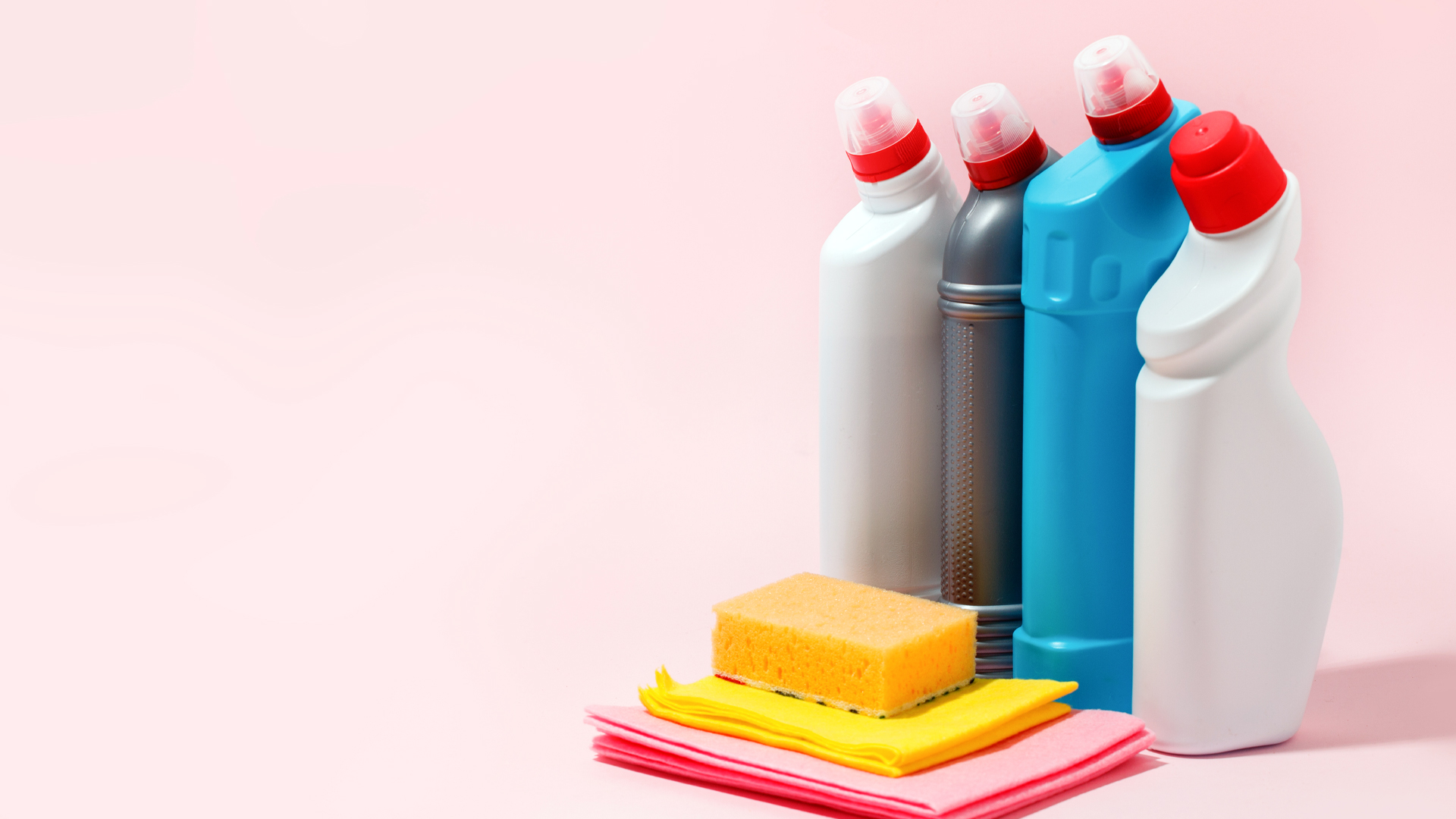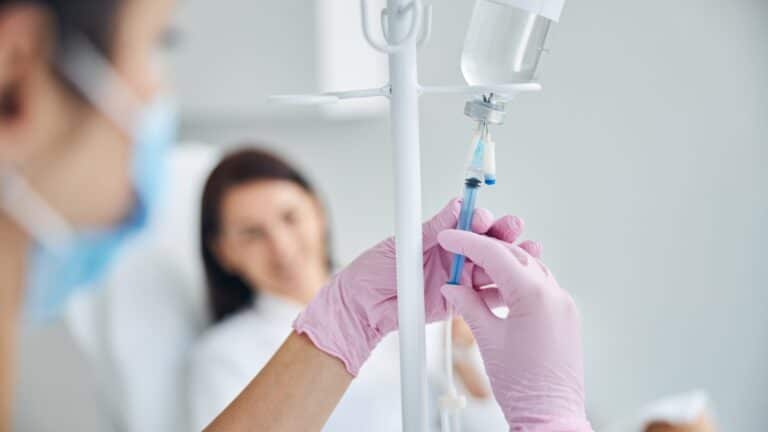According to the National Academies of Science, approximately 84,000 synthetic chemicals are used in commercial products. Your home may very well be a toxic repository for many of these harsh compounds, some of which have been associated with serious health conditions.
If you have chronic health concerns, lowering your toxic load in your home is crucial for making a full recovery. The Innovative Medicine approach to wellness examines all the potential root causes of chronic fatigue, Lyme Disease, and other complex conditions. A home that emits toxic substances is one health risk you may not be aware of.
Thankfully, detoxifying your home isn’t expensive. It simply requires learning which products may pose a risk and how to replace them with healthier alternatives.
Household cleaners
Let’s start with everyday household cleaners. A study published in Environmental Health Perspectives, suggests that conventional cleaning products that contain “that lemony-fresh scent” and other synthetic fragrances may pose a serious health risk. This is because just one fragrance may contain a mixture of hundreds of synthetic chemicals.
What’s the harm? These synthetic chemicals, the study authors explain, react with ozone in the air. Dangerous secondary pollutants, including formaldehyde, are byproducts of this chemical reaction. Cleaning products with synthetic chemicals also contain VOCs (volatile organic compounds) such as ethanol and acetone.
A 2019 study in Reviews in Environmental Health concludes that exposure to volatile organic compounds may lead to the development of cancers or tumors in “human tissues, including kidney, liver, leukemia, nasal cavity, paranasal sinus, liver and bile duct,” over a long period of time.
In order to reduce your toxic load, what’s an easy DIY cleaning product?
Instead of using harsh disinfectants, try making your own. You can use simple, safe ingredients such as lemon essential oil, bleach, baking soda, peroxide and vinegar (use white vinegar, not the kind you drizzle on salad). You can also use a non-toxic soap such as liquid castile soap. There are tons of DIY household cleaner recipes online.
Making your own non-toxic household cleaner is an important first step to detoxifying your home.
Air Fresheners
Plug-in air fresheners contain at least seven VOCs that are considered toxic or hazardous under federal laws, says a study from the University of Washington. The study of the top-selling air fresheners found that the products emitted dozens of synthetic chemicals. Lead researcher Anne Steinemann, a UW professor of civil and environmental engineering and public affairs, conducted the research because people were telling her that the air fresheners in public restrooms were making them sick.
Steinemann found that common VOCs in air fresheners included acetone, which is the active ingredient in paint thinner and nail-polish remover.
Why are synthetic chemicals allowed in air fresheners if they pose a threat to human health? The answer is that the federal government’s Consumer Product Safety Commission does not require manufacturers to disclose synthetic fragrances on product labels.
How then can you keep your home smelling pleasant if you stop using plug-in air fresheners? Not to mention strongly scented candles that contain the same harsh toxic chemicals? This is important to ask because these toxic fragrances can disrupt your endocrine system, causing hormonal imbalance and leading to a cascade of health problems.
The simple solution is to use an essential oil diffuser for natural, pleasant-scented indoor air.
Laundry Detergents and Dryer Sheets
Similar to air fresheners, the toxic VOCs in laundry detergent and dryer sheets aren’t listed on the product label. A study published in Air Quality, Atmosphere and Health, concluded that scented laundry detergent and dryer sheets “contain carcinogens that waft through vents, potentially raising cancer risk.” There are at least 25 air-polluting chemicals that are emitted by scented laundry detergent and dryer sheets.
According to a study in the Journal of Allergy and Clinical Immunology, commercial detergents are harmful to the lungs. This is because the residue they leave behind after the rinsing cycle, even after 24 hours of exposure, can harm the protective barrier of the lungs. This damage to the bronchial epithelial barrier can contribute to asthma or worsen its severity.
If you’re not keen on making your own DIY laundry detergent, you can buy a non-toxic brand recommended by the Environmental Working Group (EWG).
Cookware
Sure, cooking eggs on a nonstick pan makes clean-up much easier. But nonstick coating contains many toxic VOCs and other synthetic chemicals.
While cast iron frying pans require as much care as a small household pet, they don’t emit any toxic VOCs such as PFOA.
Dish Soap
When you’re done with a meal and it’s time to wash the dishes, think about the soap you’re using. The top-selling conventional dish soap brands contain not only fragrance but also toxic, synthetic, hormone-disrupting ingredients.
Water Bottles
When it comes to detoxing your home, also consider the products you drink out of. Plastic bottles may contain harmful toxic chemicals such as phthalates. Phthalates are a class of synthetic chemicals that makes products harder, more durable and flame retardant.
Instead of drinking out of plastic, consume drinking water and other drinks out of stainless steel bottles.
Cosmetics & Personal Care Products
According to the EWG, “No category of consumer products is subject to less government oversight than cosmetics and other personal care products.” EWG publishes on its website a list of the 20 most toxic ingredients in cosmetics, which include:
- Formaldehyde
- Phthalates
- Mercury
- Parabens (Isobutyl-, Isopropyl-, Butyl-, Propyl-)
- Lead
If you’re curious about how safe your skin care products are, use the EWG’s Skin Deep database. The database grades thousands of products on a scale of 1-10, with 10 being the most toxic.
Bathroom
In addition to cleaning products, one surprising potentially toxic product in the home are shower curtains.
Many shower curtains and shower curtain liners contain PVC, which is a type of plastic, containing dozens of synthetic chemicals. If you can’t have your shower curtains replaced with glass, consider purchasing organic cotton shower curtains and liners.
Gardens
A home detox doesn’t just remove synthetic chemical offenders from the internal environment. A full treatment also reduces potentially-carcinogenic offenders from the outdoor air. Consider the world’s best-selling weed killer, Roundup.
Roundup contains the active ingredient glyphosate which is declared a probable human carcinogen by the World Health Organization’s International Agency for Research on Cancer.
Spraying your yard with a combination of high-acidity white vinegar and rock salt may help kill weeds without exposing you to glyphosate.
Improving Indoor Air Quality
Let’s go back inside the home. In addition to detoxing your indoor air by replacing plug-in air fresheners (and aerosol cans), you can use houseplants. Certain houseplants act like natural air purifiers.
“The use of indoor plants could prove to be a cost-efficient way of indoor air-purification that could be adapted for a variety of environments with no need for special requirements and can also add an aesthetic value that can have an indirect impact on human health,” says a research study in Frontiers in Molecular Biosciences.
Chrysanthemums are regarded as one of the best plants for indoor air quality.

Conclusion
The paradigm of a healthy home is one that is well-sanitized is changing. More people are aware of the connection between synthetic chemicals in everyday household items and chronic health problems.
Improving your well-being requires learning how to make DIY, eco-friendly products or purchasing non-toxic alternatives. Thankfully, eliminating indoor air pollution and toxic chemicals from your home is easy and doesn’t require spending a small fortune.
* Disclaimer: The statements made in this article have not been evaluated by the Food and Drug Administration. Any products or treatments mentioned are not intended to diagnose, treat, cure, or prevent any disease. Please consult a licensed medical practitioner for medical advice. At Innovative Medicine, we believe in transparency. We want you to know that we may participate in affiliate advertising programs pertaining to products mentioned herein.





